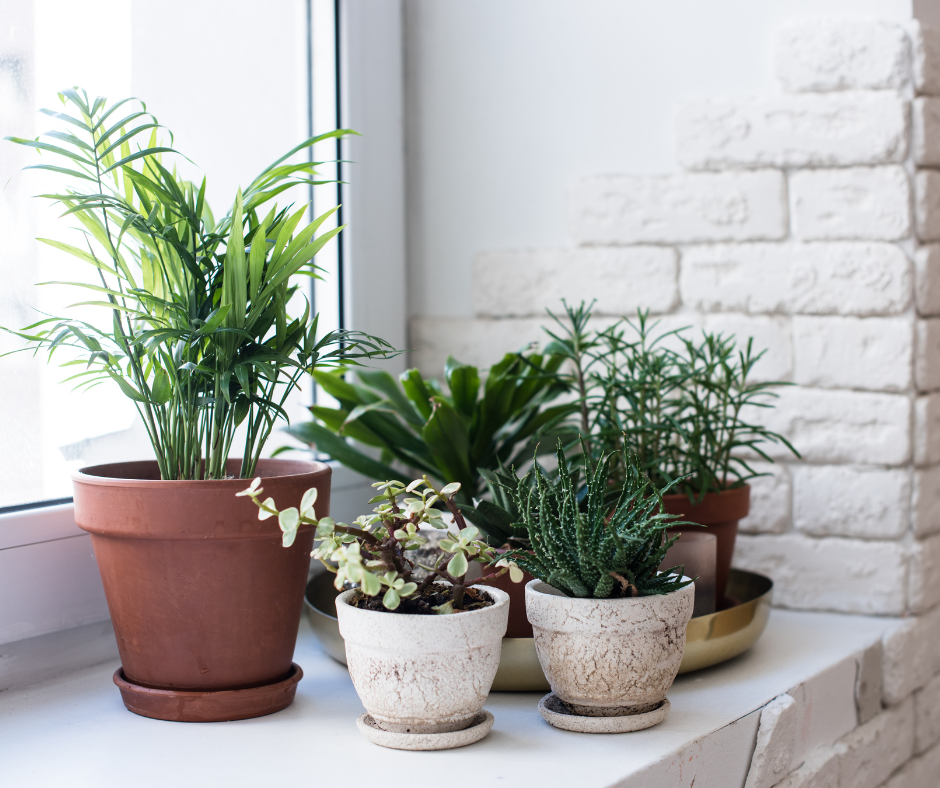We all know that plants add life and color to a room, but what you may not know is that they can also clean the air in your home. A study by NASA found that certain plants are effective at removing harmful toxins from the air, making them a great addition to any home. In this blog post, we will discuss the best plants to improve clean air in your home, and where you can place them for maximum effect!
Spider plants (Chlorophytum elatum) are one of the best air-purifying plants, and they are also very easy to care for. They can be placed in a variety of locations, including hanging baskets, pots, or even in terrariums.
Areca palms (Dypsis lutescens) are one of the most widely used palms for bright interiors. They feature feathery, arching fronds, each with up to 100 leaflets. Areca palm is commonly grown indoors, but it needs a consistently warm environment with high humidity and just the right lighting.
Corn plants (Dracaena fragrans) are a type of dracaena that is often used as an indoor plant. They are very easy to care for, and they can tolerate low light levels. Corn plants can grow to be quite large, so if you don’t have a lot of space, you may want to consider a different plant.
Snake plants (Sansevieria laurentii) are a type of succulent that is very popular as an indoor plant. They are very easy to care for and require little water or sunlight. Snake plants can grow to be quite tall, so they are perfect for placing in corners. The plant features stiff, sword-like leaves and can range anywhere from six inches to eight feet tall. Some call this plant a mother-in-law’s tongue because of it’s sharpness. Snake plants can vary in color although many have green-banded leaves and commonly feature a yellow border. Snake plants prefer indirect but steady light with some direct sun. They can adapt to full sun conditions and will also survive dimly lit situations.
Golden pothos (Scindapsus aureus) is a type of ivy that is commonly used as an indoor plant. It is very easy to care for and can tolerate low light levels. Golden pothos can also grow to be quite large, so it is perfect for placing on shelves and allowing it to drape down from bookshelves and above kitchen cabinetry.
Heart leaf philodendron (Philodendron hederaceum) is a type of philodendron that is commonly used as an indoor plant. It is very easy to care for and can tolerate low light levels. Heart leaf philodendron can also grow to be quite large. This plant’s tendency to grow very long stems (up to 13 feet) makes it one of the few “climbing” house plants. Be careful with these plants as it can cause irritations in pet and human mouths!
Aloe vera is a type of succulent that is commonly used as an indoor plant. It is very easy to care for and can tolerate low light levels. Aloe vera can grow to be quite large and can also be used for medicinal purposes. Using the inside gel of an aloe vera plant can help treat burns and cuts as well as other skin irritations. Using aloe vera as a kitchen houseplant serves many purposes including beauty, clean air and readily available first aid for cooking burns!
Dragon tree (Dracaena marginata) is a type of dracaena that is commonly used as an indoor plant. The Dragon Tree is most definitely one of the easiest indoor plants to grow and maintain. These can grow up to 6ft high indoors, and they’re slow growing. Beware as these are also poisonous to dogs and cats.
Weeping fig (Ficus benjamina) is a type of tree that is very commonly used as an indoor plant. When the Weeping fig tree is grown indoors, the plants are normally pruned to keep them about 3 feet to 6 feet tall, and their trunks are sometimes braided for decorative appeal. This tree is known for its longevity, living between 20 to 50 years. This plant should be regularly watered during the growing season but allowed to become drier from fall to late winter.
Phalaenopsis orchid is a type of orchid that is commonly used indoors. These orchids have long, coarse roots, short, leafy stems, and long-lasting, flat flowers arranged in a flowering stem that often branches near the end. It is easy to water these plants once a week by placing a few ice cubes at the base of the plant to water it slowly as it melts. This allows for maximum absorption without overwatering. These flowering plants are often in full bloom around Easter which also brings a sense of joy and excitement for the spring season to begin.
Elephant ear philodendron (Philodendron domesticum) is a type of philodendron that is commonly used as an indoor plant. Elephant ears are named such because they actually have a resemblance! Elephant ear philodendron can also grow to be quite large, reaching up to 12 feet in length. They can thrive in sun or shade but direct, mid-day sun may damage them. Philodendrons grow best when their roots are slightly cramped, so don’t plant them in a pot that is too large.
Boston fern (Nephrolepis exaltata) is a also type of fern that is commonly used as an indoor plant. These plants should live in a location where the plant gets at least two hours of indirect sunlight per day, preferably in the morning or late afternoon. The Boston fern is the most popular of all ferns grown indoors and has been found to be one of the easiest to care for and maintain.
They are also one of the most efficient air purifiers, as they remove toxins such as formaldehyde, benzene, and xylene from the air.
English ivy (Hedera helix) is a type of ivy that is commonly used as an indoor plant. These plants do best in bright indirect sunlight but can also tolerate low light conditions. English ivy is a fast-growing, evergreen vine that can reach up to 100 feet in length if left unchecked. Ivy is also known for its ability to clean indoor air by absorbing pollutants such as formaldehyde, benzene, and carbon monoxide.
Lady palm (Rhapis excelsa) is a type of palm that is commonly used as an indoor plant. These plants are very slow-growing, reaching a height of only about three to five feet. They have slender, upright stems that are topped with dark green, fan-shaped leaves. Lady palms do best in bright indirect sunlight but can also tolerate low light conditions.
Pothos (Epipremnum aureum), also known as devil’s ivy or devil’s vine. It is a low-maintenance perennial evergreen houseplant and is desired for its glossy, green, or variegated leaves on cascading stems. It only grows 6 to 8 feet as a horizontal groundcover, but the trailing, climbing vines can grow as long as 40 feet. This feature makes it well-suited for hanging baskets. These plants prefer medium light, well-lit but not direct sunlight.
These houseplants, as well as others, can help you breathe fresher air in your home. However, if you find your home smelling musty, feeling damp or you begin to have signs of water damage, don’t hesitate to call a professional. Plants can help, but Clean Air Carolinas can help control the problems! From mold and mildew to crawl space issues, let Clear Air Carolinas ensure that you’re breathing fresh air at home!




